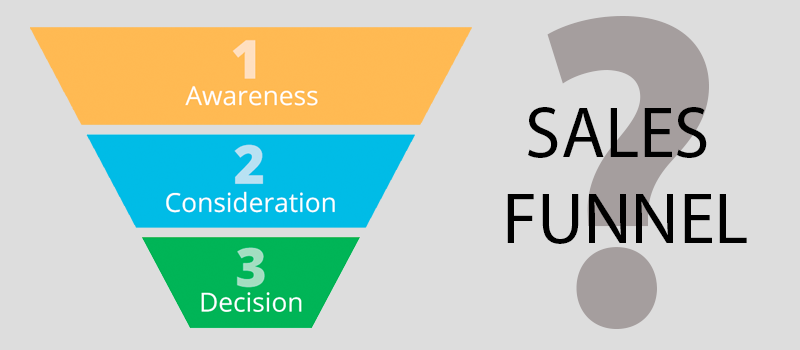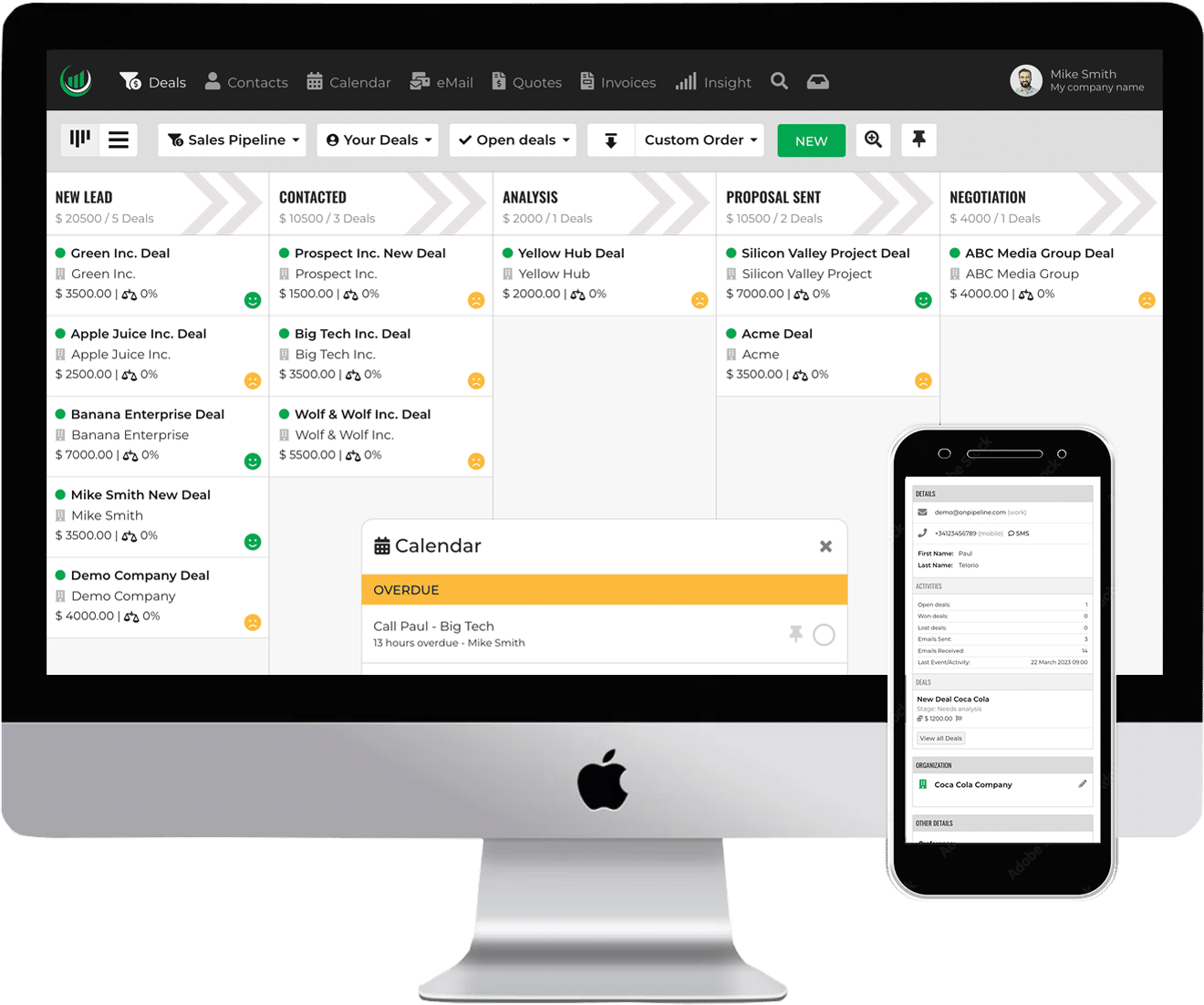The majority of companies have not even tried to measure the performance of their sales funnel and optimize it, just as the majority of leads are not converted into deals and sales.
In short, a funnel in a sales CRM tool is a visual representation from the first contact with a potential customer (lead) to the purchase.
What is a Sales Funnel?
A sales funnel is a visual representation of the customer journey from awareness to action. It shows the sales process starting with a large number of prospects ending to a smaller number of persons who wish make the purchase.
Implementing a sales funnel is important because it can
- Create customers out of a business’s target audience. The sales funnel moves people through a series of steps that may eventually lead to them making a purchase.
- A sales funnel helps businesses focus their efforts on a specific group of prospects, making it easier to convert them into customers. It can also help businesses weed out unqualified prospects by requiring them to go through a series of steps leading to a purchase.
- A sales funnel not only acquires a target audience and customers, but also generates referrals from satisfied customers. This expands the potential customer base beyond the original target audience.
- Monitors and reports! A sales funnel helps organizations determine how well each step of the sales process is functioning and make changes as needed.
How to build a Sales Funnel
- Analyzing audience behavior involves defining a target audience and understanding how they interact with your business. This can be done by looking at metrics such as website traffic and engagement, to see what interests them and how long they stay on your site.
- You need to have something that will capture your audience’s attention and draw them into your funnel. This could be something like rich media, like infographics and videos, or advertisements.
- Direct your audience to a specific landing page. This page should be attractive and gather information from the users’ experiences. Always add a call to action widget that gets the prospect to get in touch with you.
- It is important to generate leads continuously for the funnel. There are several lead generation tools you can use to automate this process.
- It is important to nurture relationships with leads in order to convert them into customers. The sales funnel exists to generate customers.
Funnel metrics
The following are examples of lead-to-revenue management metrics used by companies to analyze and score leads and prospects during the sales cycle to determine the success of their sales teams.
- The average order value is the average amount of revenue generated per order or purchase. This is important because it shows how much each customer is worth on average.
- Customer lifetime value (CLV) is a metric that takes into account the value of each sales opportunity in the funnel, as well as the cost of acquisition.
- The percentage of leads that turn into customers (conversion rate), calculated by dividing the number of leads/opportunities in your sales pipeline by the total number of deals won in a period.
- Total prospects who follow up and respond to the business’s marketing.
- Total revenue – total amount of money generated by sales in a given period of time. This is a good measure of how efficient a company is at selling.
Stages
Each stage brings the most qualified leads to the next phase, keeping in the previous stage those who have not passed the qualification process.
New Contacts (Lead) > Qualification > Proposal (Deal) > Negotiation> Sale
Your sales team knows very well the stages of their sales funnel (sales activities). They manage to scale their sales process, predict their sales and revenues and achieve their goals.
Each company has its own way of managing the sales cycle and customer interactions. We can distinguish them in three phases:
Awareness:
In this stage, prospects turn into Leads. It’s now time for your salespeople, to ask relevant questions and qualify the lead.
Consideration:
Your Leads are now Qualified since you talked to your prospects and they answered questions that help you understand if you can solve their needs.
Decision:
It is when your Qualified leads go through a Proposal and a Negotiation.
Sales Pipeline vs. Funnel
The Sales Pipeline is often confused with the sales funnel. It’s not a big mistake but it must be said that technically speaking the Pipeline is a part of the Funnel. While a Funnel concerns Leads the Pipeline manages Deals.
A CRM tool with Sales Funnel or Sales Pipeline management functionality has a positive impact on performance. It is not just a customer database, it’s a Pipeline Management tool. It helps define the sales process, identify losses and simplify the conversion process to bring leads to sales.
How a sales funnel affects revenue
A sales funnel helps you communicate the right message at the right time. Imagine that you are buying a car and but you don’t know exactly what you want before seeing what the market offers you (you are not ready to buy yet) and you want to know more about the advantages and disadvantages of certain models, features and prices .
With a precise sales funnel, you can provide the best information and a winning message to your potential customers and accompany your future customer to an informed purchase.
When your prospect begins their market research they will realize how many options they have. Especially in the early stages, customers can more easily switch to another supplier.
Therefore, it is important that you are aware of your sales pipeline to address all their possible questions and concerns in advance and increase their trust in you.
Being quick is important
Move deals to the next stage faster! The longer your sales funnel is, the more you’ll be able to define exactly what it takes to move your prospects down the pipeline. In other words, be careful that the stages are not excessively long.
Manage your sales funnel every day
The more open deals you have, the more likely they will be lost due to lack of time. For this reason, it is essential to implement a CRM platform that helps you remember to work on every single deal. A good system will give you a visual overview of what is happening at each stage of the sales process.
Gather data from the user experience. Call to action that draws the prospect’s attention. There are several lead generation services that can be used to automate this process.


